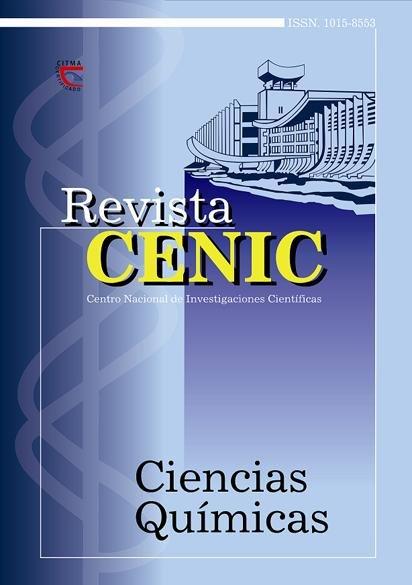Topological and topographical indices for prediction of solvent accessible surface area in hydrocarbons
Abstract
The topological and topographical indices are broadly used tools in molecular modeling studies. Its computer easiness and high descriptive capacity of the chemical structure confers it a great applicability in the field of chemical-physical and biological properties prediction. On the other hand, the solvent accessible surface area is a theoretical chemical-physical parameter that is calculated, among other, for the delphi method. It is broadly used in relationship studies between the chemical structure and the biological activity, solvatation and lipophilicity studies. A regression model that structural features to the solvent accessible surface area for a sample of 205 aliphatic, aromatic and aliciclic hydrocarbons is presented. As independent variables, different topological and topographical indices were used. The sample was divided in samples of training and validation using cluster analysis, with 163 and 42 compounds respectively. The obtained models for the samples of training and validation shows a correlation coeficient of 0 .997 and 0 .998 with a standard deviation of 7 .575 and 7 .595A2, respectively. This model offers a new alternative for the calculation of the solvent accessible surface area in hydrocarbons as a useful tool for molecular modeling studies.

Downloads
Published
How to Cite
Issue
Section
License
Copyright (c) 2001 Copyright (c) 2001 Revista CENIC Ciencias Químicas

This work is licensed under a Creative Commons Attribution-NonCommercial-ShareAlike 4.0 International License.
Los autores que publican en esta revista están de acuerdo con los siguientes términos:
Los autores conservan los derechos de autor y garantizan a la revista el derecho de ser la primera publicación del trabajo al igual que licenciado bajo una Creative Commons Atribución-NoComercial-CompartirIgual 4.0 que permite a otros compartir el trabajo con un reconocimiento de la autoría del trabajo y la publicación inicial en esta revista.
Los autores pueden establecer por separado acuerdos adicionales para la distribución no exclusiva de la versión de la obra publicada en la revista (por ejemplo, situarlo en un repositorio institucional o publicarlo en un libro), con un reconocimiento de su publicación inicial en esta revista.
Se permite y se anima a los autores a difundir sus trabajos electrónicamente (por ejemplo, en repositorios institucionales o en su propio sitio web) antes y durante el proceso de envío, ya que puede dar lugar a intercambios productivos, así como a una citación más temprana y mayor de los trabajos publicados (Véase The Effect of Open Access) (en inglés).













